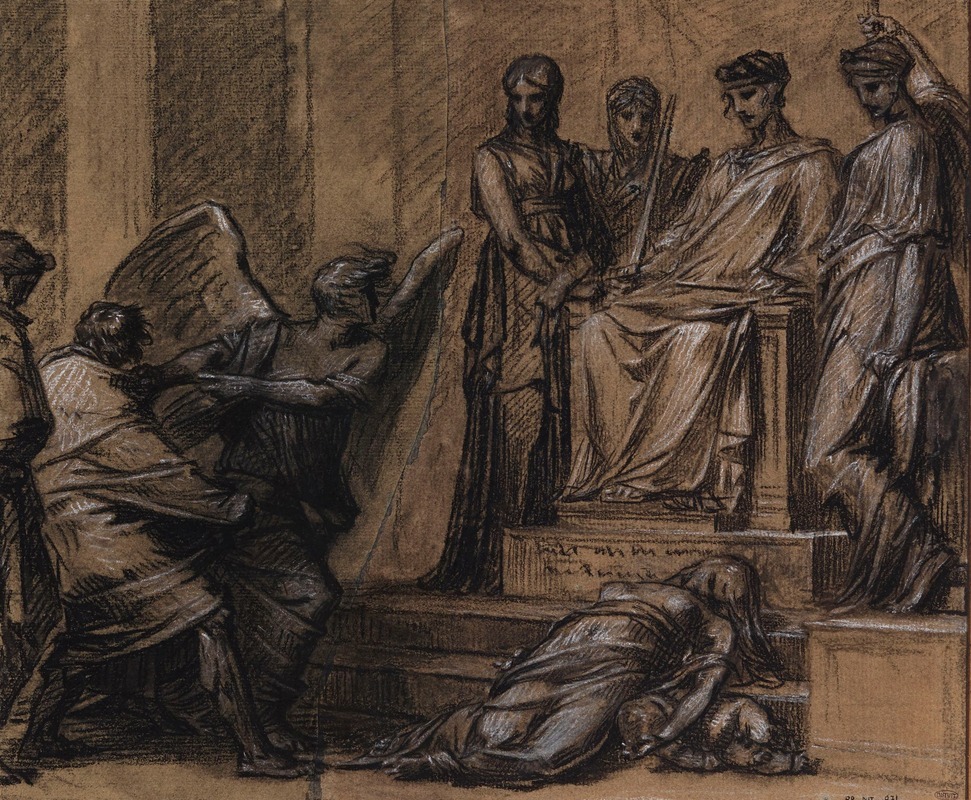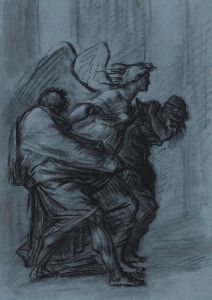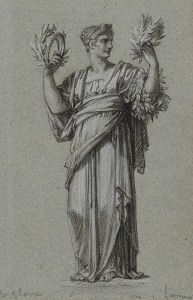
Thémis et Némésis
A hand-painted replica of Pierre-Paul Prud'hon’s masterpiece Thémis et Némésis, meticulously crafted by professional artists to capture the true essence of the original. Each piece is created with museum-quality canvas and rare mineral pigments, carefully painted by experienced artists with delicate brushstrokes and rich, layered colors to perfectly recreate the texture of the original artwork. Unlike machine-printed reproductions, this hand-painted version brings the painting to life, infused with the artist’s emotions and skill in every stroke. Whether for personal collection or home decoration, it instantly elevates the artistic atmosphere of any space.
Pierre-Paul Prud'hon was a renowned French painter, celebrated for his unique style that combined elements of Neoclassicism and Romanticism. One of his notable works is "Thémis et Némésis," which exemplifies his mastery in depicting allegorical and mythological subjects. Prud'hon was known for his ability to convey emotion and depth through his use of soft, diffused lighting and graceful figures, which is evident in this painting.
"Thémis et Némésis" features two significant figures from Greek mythology: Themis and Nemesis. Themis is often associated with divine law, order, and justice. She is traditionally depicted as a figure of wisdom and fairness, sometimes holding scales or a cornucopia. Nemesis, on the other hand, represents retribution and vengeance, often seen as a balancing force against hubris and excessive pride. In Greek mythology, Nemesis ensures that justice is served, often punishing those who succumb to arrogance.
Prud'hon's portrayal of these two figures reflects his interest in themes of justice and morality, which were particularly resonant during the turbulent times of the French Revolution and the Napoleonic era. His work often explored the tension between human passion and the ideals of justice and order, making "Thémis et Némésis" a compelling representation of these concepts.
The painting is characterized by Prud'hon's signature style, which includes a delicate use of chiaroscuro, creating a soft transition between light and shadow. This technique adds a dreamlike quality to the composition, enhancing the ethereal presence of the mythological figures. Prud'hon's figures are typically rendered with a sense of grace and poise, and "Thémis et Némésis" is no exception. The figures are depicted with flowing drapery and serene expressions, embodying the ideals they represent.
Prud'hon's work was highly regarded during his lifetime, and he received numerous commissions from influential patrons, including Napoleon Bonaparte and Empress Joséphine. His ability to capture the subtleties of human emotion and his refined aesthetic sensibility made him a favorite among the French elite. Despite the political upheavals of his time, Prud'hon managed to maintain a successful career, producing works that continue to be admired for their beauty and depth.
"Thémis et Némésis" is a testament to Prud'hon's skill in blending classical themes with a romantic sensibility. The painting not only reflects the artist's technical prowess but also his philosophical engagement with the concepts of justice and retribution. Today, Prud'hon's works, including "Thémis et Némésis," are held in high esteem and can be found in prestigious collections and museums, where they continue to be studied and appreciated for their artistic and historical significance.
In summary, Pierre-Paul Prud'hon's "Thémis et Némésis" is a remarkable example of his ability to convey complex themes through elegant and emotive compositions. The painting remains a significant piece in the study of Neoclassical and Romantic art, illustrating the enduring appeal of mythological subjects and the timeless nature of Prud'hon's artistic vision.


















